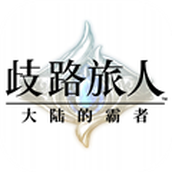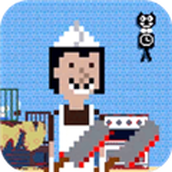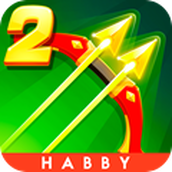最新下载
热门教程
- 1
- 2
- 3
- 4
- 5
- 6
- 7
- 8
- 9
- 10
ios开发之swift弹窗大全例子
时间:2022-06-25 23:42:47 编辑:袖梨 来源:一聚教程网
| 代码如下 | 复制代码 |
| // // ViewController.swift // Tanchu // // Created by 房允麒 on 15/12/1. // Copyright (c) 2015年 JS. All rights reserved. // import UIKit class ViewController: UIViewController { var alert1: UIAlertController! var alert2: UIAlertController! var actionSheet: UIAlertController! override func viewDidLoad() { super.viewDidLoad() // Do any additional setup after loading the view, typically from a nib. // 定义一个按钮,显示最简单的 Alert let button1 = UIButton.buttonWithType(.System) as! UIButton button1.frame = CGRectMake(self.view.frame.width/2 - 200, 50, 400, 50) button1.setTitle("最简单的 Alert", forState: UIControlState.Normal) button1.addTarget(self, action: "buttonAction:", forControlEvents: UIControlEvents.TouchUpInside) button1.tag = 1 // 定义一个按钮,显示带文本框的 Alert let button2 = UIButton.buttonWithType(.System) as! UIButton button2.frame = CGRectMake(self.view.frame.width/2 - 200, 150, 400, 50) button2.setTitle("带文本框的 Alert", forState: UIControlState.Normal) button2.addTarget(self, action: "buttonAction:", forControlEvents: UIControlEvents.TouchUpInside) button2.tag = 2 // 定义一个按钮,显示上拉菜单 let button3 = UIButton.buttonWithType(.System) as! UIButton button3.frame = CGRectMake(self.view.frame.width/2 - 200, 250, 400, 50) button3.setTitle("上拉菜单", forState: UIControlState.Normal) button3.addTarget(self, action: "buttonAction:", forControlEvents: UIControlEvents.TouchUpInside) button3.tag = 3 // 定义 cancel、ok、save、delete、reset 的 UIAlertAction var cancelAction = UIAlertAction(title: "cancel", style: UIAlertActionStyle.Cancel, handler: nil) var okAction = UIAlertAction(title: "ok", style: UIAlertActionStyle.Default){ (action: UIAlertAction!) -> Void in println("you choose ok") } var saveAction = UIAlertAction(title: "save", style: UIAlertActionStyle.Default){ (action: UIAlertAction!) -> Void in println("you choose save") } var deleteAction = UIAlertAction(title: "delete", style: UIAlertActionStyle.Destructive){ (action: UIAlertAction!) -> Void in println("you choose delete") } var resetAction = UIAlertAction(title: "reset", style: UIAlertActionStyle.Destructive){ (action: UIAlertAction!) -> Void in println("you choose reset") } // 1、初始化最简单的 Alert alert1 = UIAlertController(title: "simple alert", message: "this is a simple alert", preferredStyle: UIAlertControllerStyle.Alert) alert1.addAction(cancelAction) alert1.addAction(resetAction) alert1.addAction(okAction) // 2、初始化带文本框的 Alert alert2 = UIAlertController(title: "login alert", message: "please enter your name and password", preferredStyle: UIAlertControllerStyle.Alert) alert2.addTextFieldWithConfigurationHandler { (textField: UITextField!) -> Void in textField.placeholder = "name" } alert2.addTextFieldWithConfigurationHandler { (textField: UITextField!) -> Void in textField.placeholder = "password" textField.secureTextEntry = true } var loginAction = UIAlertAction(title: "login", style: UIAlertActionStyle.Default) { (action: UIAlertAction!) -> Void in var name = self.alert2.textFields!.first as! UITextField var password = self.alert2.textFields!.last as! UITextField println("name : (name.text); password : (password.text)") } alert2.addAction(loginAction) // 3、初始化上拉菜单 actionSheet = UIAlertController(title: "simple action sheet", message: "action sheet message", preferredStyle: UIAlertControllerStyle.ActionSheet) actionSheet.addAction(cancelAction) actionSheet.addAction(deleteAction) actionSheet.addAction(saveAction) self.view.addSubview(button1) self.view.addSubview(button2) self.view.addSubview(button3) self.view.addSubview(button3) } /// 按钮响应事件 func buttonAction(sender: UIButton) { let num = sender.tag switch num { case 1: self.presentViewController(alert1, animated: true, completion: nil) case 2: self.presentViewController(alert2, animated: true, completion: nil) case 3: self.presentViewController(actionSheet, animated: true, completion: nil) default: break } } override func didReceiveMemoryWarning() { super.didReceiveMemoryWarning() // Dispose of any resources that can be recreated. } } | |
相关文章
- 《弓箭传说2》新手玩法介绍 01-16
- 《地下城与勇士:起源》断桥烟雨多买多送活动内容一览 01-16
- 《差不多高手》醉拳龙技能特点分享 01-16
- 《鬼谷八荒》毕方尾羽解除限制道具推荐 01-16
- 《地下城与勇士:起源》阿拉德首次迎新春活动内容一览 01-16
- 《差不多高手》情圣技能特点分享 01-16














